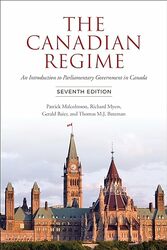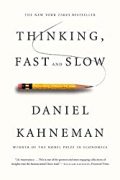
Rating: 8.6/10.
The Canadian Regime: An Introduction to Parliamentary Government in Canada by Patrick Malcolmson, Richard Myers, Gerald Baier, Tom Bateman
Textbook that explains the structure, principles, and patterns of legal processes in the Canadian democratic government system. It includes the constitution, political policies, various parts of the government, and how they make decisions. The book maintains a good balance between the analysis of the legal framework and the analysis of what is actually done in practice — many of these practices are conventions that are not legally codified but are equally as important. The textbook also provides a lot of background information about historical political events, as well as the current situation up until the time the book was published, which was fairly recent.
Chapter 1. Aristotle defines several types of government as just vs unjust. Surprisingly, democracy was in the unjust group because it is possible for a majority to make unjust rules for the minority. This was the case for direct democracy in ancient Greek society. However, modern parliamentary democracy is a representative democracy, which maintains a balance between accountability to the people and the mob rule that Aristotle was afraid of.
We normally view liberty as essential, but this can be justified in different ways. The natural rights justification posits that life and liberty are fundamental rights that politics cannot alienate. On the other hand, the utilitarianism argument asserts that liberty is good because it enhances human happiness and utility. Generally, things in the private sphere, such as religious practices, should be respected as long as they do not interfere with others. Additionally, the rule of law should apply to everyone, including the government. The question of consenting to the government system is clear for people who choose to become Canadian citizens, but it is less clear for those who are born as Canadians, and it becomes even more contentious for the indigenous.
Chapter 2: The constitution defines the structure of the government, outlining the responsibilities of the different branches, namely the legislative, executive, and judicial branches. It also delineates the responsibilities of the federal vs provincial governments, as well as the fundamental freedoms that the government must not interfere with. The constitutional rules are laid out through a mixture of conventions and laws. A convention is not enforced by law, but by the voting public, such as the convention that there should be an election every four years. On the other hand, constitutional law is enforced by the courts and is written down.
The Canadian constitution comes in two parts. The first part, established in 1867, defines the division of powers, but in many legal situations, it was still a colony of Britain. Constitutional politics were very active from the 70s until 1995, during which issues of Quebec separation were prominent in politics: issues like changing borders and determining which provinces can amend the constitution, and led to Trudeau amending the constitution in 1982. This introduced the Charter of Rights and Freedoms, as well as more precise rules regarding how the constitution may be changed. Since 1995, the constitution has not played a large part in Canadian politics.
Chapter 3: Montesquieu and Locke claimed that the best government should have a separation of powers, which formed the basis of government in the US. In contrast, the British and Canadian systems are based more on the principle of responsible government. Therefore, the Crown, the Cabinet, and the House of Commons are all set up so that each is directly or indirectly responsible to a democratically elected group.
The dynamics of majority and minority government are very different. The government must always maintain the confidence of the House, meaning at least half the House of Commons must support the Prime Minister; otherwise, the government dissolves and there is an election. In a majority government, this is straightforward, but in a minority government, what this means is that every policy by the Prime Minister must be supported by at least one other party. However, another dynamic at play is that the opposition of the minority government often does not want an election, so this allows the minority government to introduce things that other parties don’t agree with. Typically, majority governments are more stable and can get more things done faster, but minority governments are not necessarily unstable.
The process of forming a government is quite complex, involving the Prime Minister and the Crown. It is not automatically the case that the leader of the party with the most seats becomes the Prime Minister. In the event that there is no majority, the only legitimate Prime Minister is one who has the confidence of the House of Commons. The Prime Minister is responsible for appointing the cabinet, which must be members of the House of Commons. Party discipline is much stronger in the Canadian system than in the US system, because without party discipline, the government is unstable. Without the support of the House of Commons, the government may be dissolved at any time.
There are some notable differences between the separation of powers in the American system and the responsible government system in Canada. The separation of powers means that it is less likely to lead to tyranny, but it is also less efficient. The US president is not the head of the entire government, but only one of the branches, whereas in the Canadian system, if there is a majority government, the Prime Minister basically has a four-year dictatorship and is able to push policies that are highly unpopular.
Chapter 4. The Governor General represents the position of the Crown, given that the actual Queen is physically in Britain, making it inconvenient for her to preside over Canadian matters. This position is primarily symbolic, so it’s not necessarily required for the holder to be a politician, but under certain circumstances, they may be required to make political decisions. The Crown, also known as the Governor General, rubber-stamps everything from the cabinet, but is legally responsible for enforcing the rules of the formation of government. The Governor General appoints the Prime Minister as the person who is most likely to uphold the majority of the House of Commons’ confidence. However, historically, it has always been obvious who this person is, so no real decision is typically needed.
The cabinet is composed of senior politicians from the House of Commons, each individually selected by the Prime Minister, including individual ministers such as the Minister of Natural Resources. These ministers propose bills that must be approved by the cabinet as a whole before being voted on by the House. Over time, the cabinet has grown quite large, making it inefficient to meet as a whole. As a result, they form smaller sub-committees to decide on issues and get more work done. The Prime Minister wields significant power; for example, Stephen Harper frequently bypassed his cabinet to push changes in policy. However, there are limits to how much unpopularity the cabinet and caucus will tolerate.
Chapter 5: Rules of the Parliament. A session typically lasts a year, during which all legislation must be completed. A sitting varies from a day to a few weeks, where MPs meet consecutively. The government and opposition sit on opposite sides of the House of Commons, with the senior cabinet members occupying the front row.
Most of the bills discussed in the House of Commons are government bills, meaning that they have already received cabinet approval. While it is possible for any MP to propose a private bill, these are rarely passed and mostly serve to bring issues to attention. The House conducts three readings of a bill before it becomes law, each with different purposes, to ensure thorough understanding. A resolution is different from a bill in that it is voted on, but no law is passed. The question period provides the opposition with a chance to ask questions and deliver speeches that attack the government; almost all of the public footage of the parliament is captured during this period. There are rules on parliamentary procedure, such as how much time is spent in debate and when it can be ended prematurely.
Backbenchers, or MPs who are not in the cabinet, are often seen as just voting along party lines, but they do have some roles and influence. During caucus meetings (which are private within a party), they are able to influence the party stance; the House committee is a detailed examination of the bills, and party discipline is less rigid here. There is some discussion of reforms to reduce party discipline, but there are advantages and disadvantages to this: overall, the government is more predictable and smooth when it is a cabinet government rather than votes of 338 individual MPs.
Originally, the Senate was meant to serve as another layer of checks, but since they are not elected, they conventionally never oppose any House of Common bill. There was some controversy during Mulroney’s period when he introduced the GST and appointed new senators to ensure the bill would not be blocked. Nowadays, the Senate is often perceived as representing Canada’s business elite, which has led to a lot of recent Senate reforms by the Harper and Trudeau governments.
Chapter 6. The Canadian system is based more on party rather than individual representation, so crossing the floor (or joining another party different from elected) is a strong betrayal of trust, so it is rare even though technically possible. Representation is mostly based on population, as one candidate is elected from each riding, this ensures geographic representation but does not fully encompass diversity because the elected MPs won’t necessarily be equally diverse; it’s a tricky question to determine which inclusivity and diversity measures are relevant for representation. Eg: it is challenging to ensure an equal proportion of women among the elected MPs without excessive interference, therefore Trudeau appointed the cabinet to ensure a 50% representation of women.
Terms have a five-year limit, but the convention is to call an election in four years, sometimes shorter if the opposition is weak. The election has a relatively fixed duration of campaigning and a fixed marketing budget, with restrictions on what is allowed for third-party marketing.
The system in Canada is a Single Member Plurality (SMP), meaning that there is a single winner in each riding who has the most votes. The SMP system has a sort of “winner takes all” dynamic, where the leading party gets a lot more seats than their proportion of the vote, as long as their supporters are relatively spread out. More minor parties, like a Green Party, get very few seats.
Proportional Representation (PR) is a system where the number of MPs for each province will be proportional to how many people voted for them; this will lead to more minor parties. But in a minority government, these minor parties tend to have disproportionate leverage, and is generally less stable as a majority government will be essentially impossible under PR. Discussions and proposals of electoral reform have been made, with discussion of PR and systems like ranked ballot, but so far, none of them have passed because each would be harmful to at least one of the parties, leading to disagreement and the status quo.
Chapter 7: In the Canadian constitution, political parties are not necessarily a requirement, but in reality, they are crucial in Canada and function better than a government full of independent members (even though some governments, like Nunavut, are filled with independents instead of parties). Political parties strive to balance between the needs of the majority and the minority as they need to secure seats throughout the country, and also to balance ideals versus practicality. In general, conservative parties want to maintain the status quo, leaning closer to the free market, whereas progressive parties want the state to take a more active role in improving people’s lives.
Canada’s major parties are as follows: The Conservative Party, historically started as representing Western Canada’s interests, now has seen several incarnations, including the Progressive Conservatives, Reform Party, and most recently, the Conservative Party led by Stephen Harper. The Liberal Party has historically been the most dominant party, favored by the SMP system due to its centrist stance, known for supporting individual rights of minorities such as LGBT, women, and indigenous people. The NDP, a social demographic party, has been the official opposition once in 2011, which was the highest point of the party. The Bloc Quebecois (BQ), which only runs in Quebec, has been on average the third largest party due to the SMP system and advocates for Quebec’s interests, especially regarding language and religious minorities. Lastly, the Green Party is primarily a single-issue party focused on the environment and is disadvantaged by the SMP system, and arguably, environmentalist political efforts are better used to make larger parties more environmental.
Canada’s parties can be grouped roughly into several categories: brokerage parties like the Liberals and the Conservatives try to appeal to as wide a range of people as possible and makes compromises to do so. Single-issue parties and ideological parties that are not very successful; they are disfavored under the SMP system. In contrast, regional protest parties like BQ are much more favored in this system. Each party has its internal process for selecting the party leader, who has to be carefully vetted for potentially objectionable things that they did in the past. This is done at a leadership convention, which has participation not only from the caucus but also from some other party members associated with them. To prevent the acceptance of funding from business interests in exchange for favors, all types of these donations are banned, and instead, there are fixed spending limits for elections.
Chapter 8. In a unitary system, there is one government that has authority over all the other governments. However, Canada operates under a federalist system: this means that there are both federal and provincial governments, and neither is subordinate to the other; they have equal status in the constitution but handle different matters. The municipal government, however, is subordinate to the provincial government. The reason Canada opted for a federal system is because Quebec and the peripheral regions could not accept being subordinate to the federal center.
In the beginning of 1867, the provincial government used to be much weaker than the federal government because it had limited ways of extracting revenues, only through direct taxation (income tax). However, nowadays, income tax is a much bigger proportion of taxation. Additionally, it also has healthcare, which was a small part of the economy in the 19th century, but is a major factor nowadays. The federal government collaborates with provincial governments on various issues that affect both levels and frequently transfers from federal to provincial governments. Many times, these transfers are conditional, based on the provinces agreeing to certain conditions in exchange for money from the federal government. A more controversial issue is equalization payments, where provincial governments from poorer regions receive unconditional grants from the federal government; this is controversial because richer provinces like Alberta are resentful of these transfers to the poorer provinces, such as Atlantic Canada, but it is necessary, otherwise, these provinces would have a reduced standard of living.
Municipal governments are only able to raise poverty tax, so they have less revenue than the federal and provincial government, therefore they must work with higher levels of government to fund larger projects. Indigenous groups have some level of self-governance from the Indian Act, but the implementation is uneven across many types of indigenous groups in different geographic areas.
Chapter 9: The Canadian Charter of Rights and Freedoms. This was introduced in the 1982 Constitution and is supposed to prevent a democratic majority from violating the rights of minorities that are considered fundamental, eg: Canadian citizens of Japanese heritage were sent to detention camps during World War II. The Charter concerns the freedom of speech and religion, the right to vote, basic legal rights, mobility rights to enter and leave Canada, and the freedom to move around the country in any province. It also includes a bunch of language-related rights for English and French speakers.
The charter of rights and freedoms sometimes comes under legal consideration: when do these laws apply to certain cases, such as dangerous prostitution work? The court ruled that it did not apply in this case. Chartered freedoms are not absolute and can be overridden by specific laws, eg: criminals and drug traffickers are not allowed to leave the country.
Chapter 10. The judiciary is responsible for several things. Resolving private disputes between two private parties is generally done using precedents, forming a set of common law where cases are decided similarly to how previous cases have been decided. Public law involves disputes between the government and private parties. Judges must appear to be impartial to the topics being judged and should not engage in politics.
Judicial independence implies that judges cannot be fired, given raises, etc, by the executive branch based on their rulings. There is a hierarchy among different branches dealing with federal versus provincial laws, with the highest authority being the Supreme Court. The Supreme Court hears about 70 to 80 cases a year and is composed of nine judges, each of these judges is appointed by the Prime Minister and should represent a diverse group of nonpartisans and they should also be bilingual.
Chapter 11: It turns out that only about 60% of registered voters actually show up to vote most of the time. This is where the role of education comes in, to educate society about the role of politics in society and how the rules of the system are defined, so people can understand it better.



